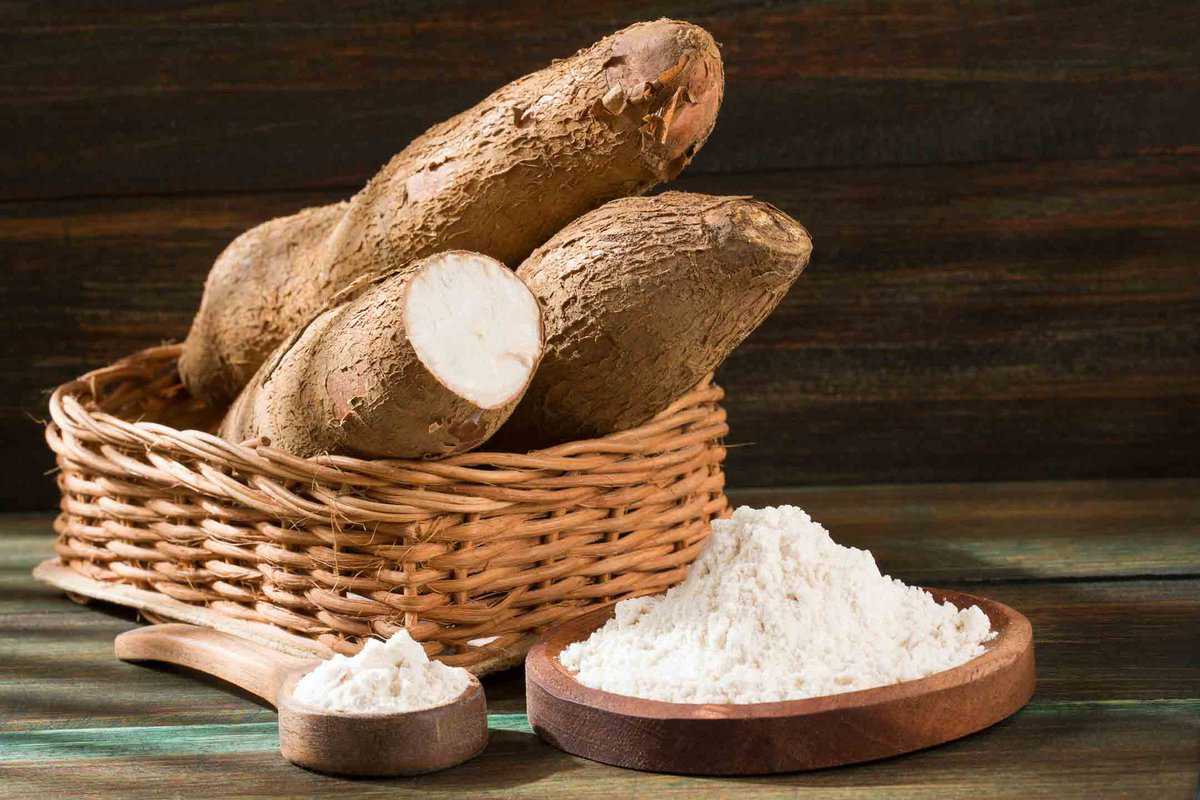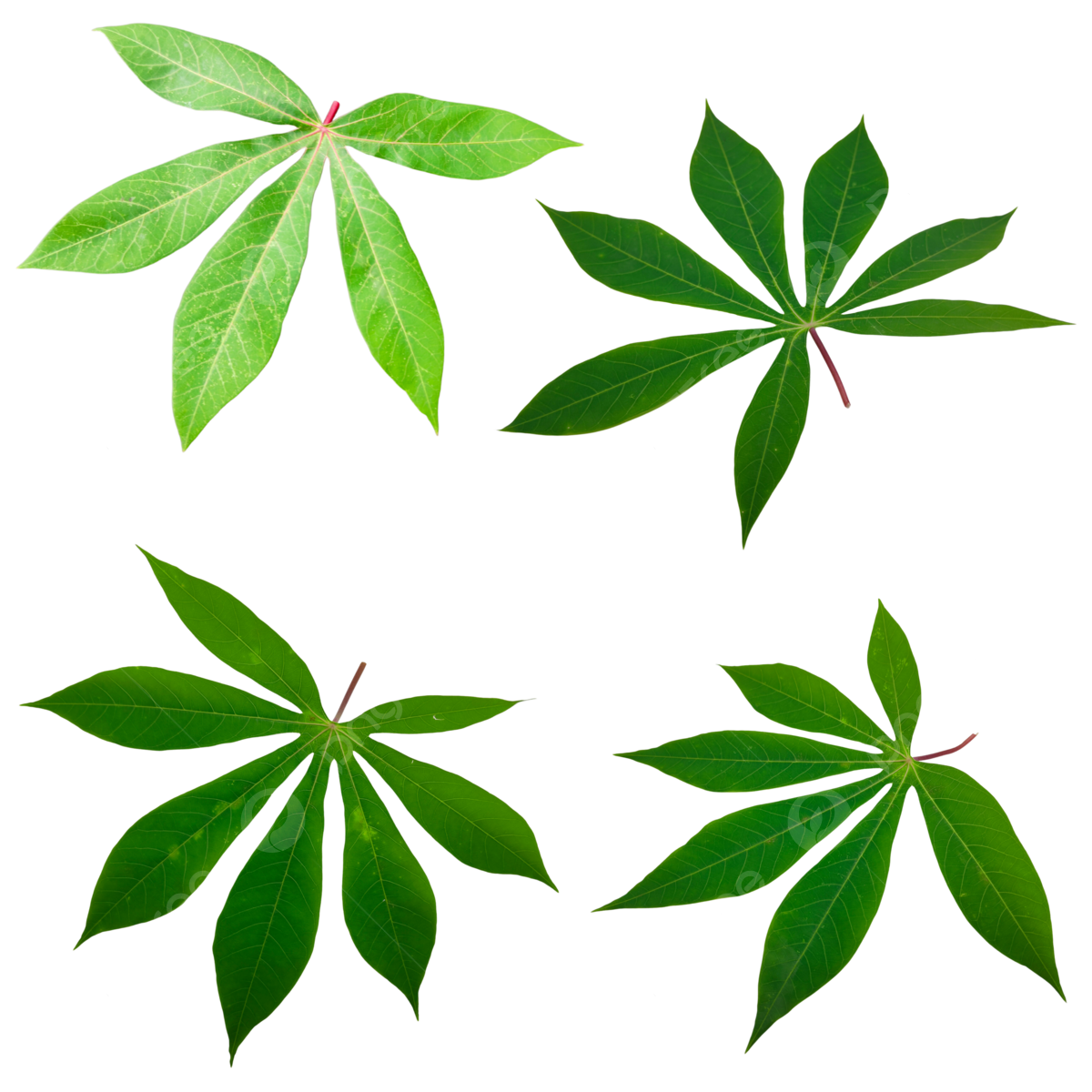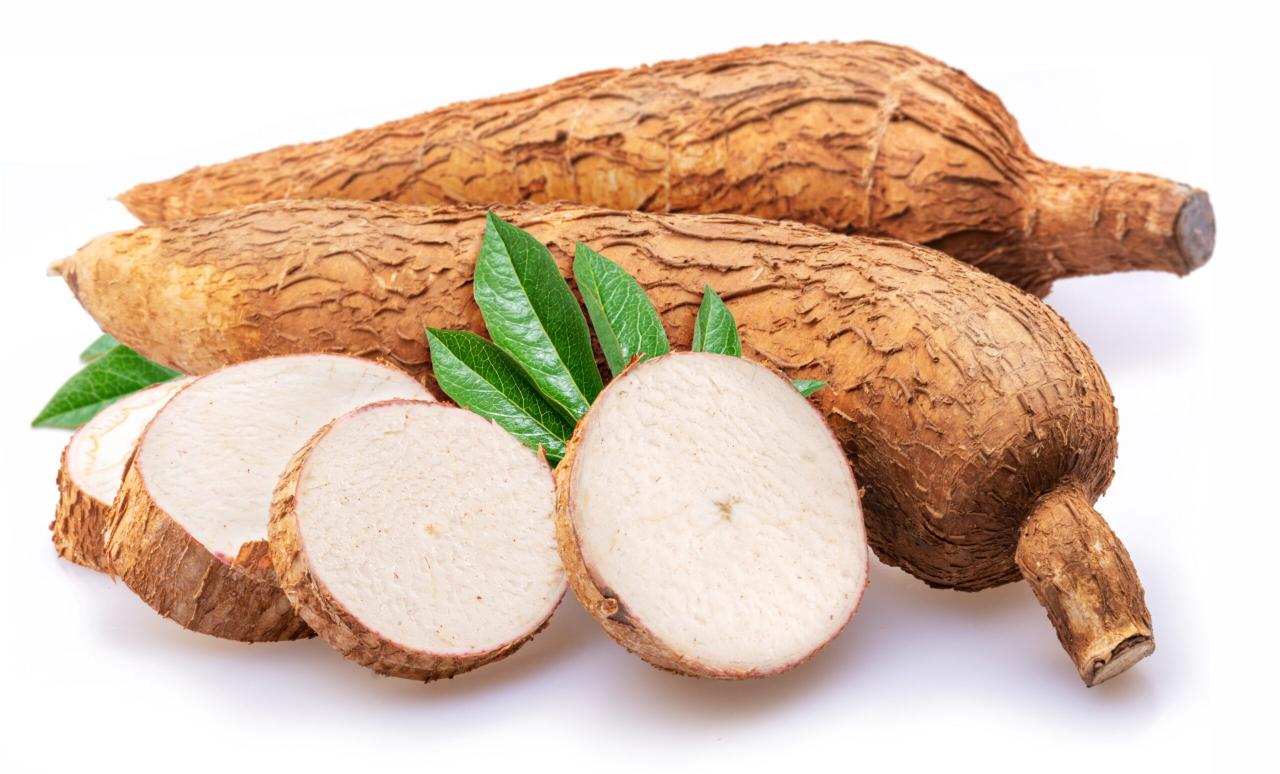Cassava Leaf Magic: How to Cultivate and Use This Nutritious Green for Beautiful Results, this article delves into the remarkable world of cassava leaves, unveiling their nutritional prowess and versatile applications. From traditional dishes to modern culinary innovations, cassava leaves have long been cherished for their unique flavor and health benefits.
This guide explores the art of cultivating cassava leaves, unlocking their secrets for vibrant health and radiant beauty.
Beyond its culinary uses, cassava leaves offer a treasure trove of nutrients that contribute to overall well-being. Rich in vitamins, minerals, and antioxidants, they play a vital role in boosting the immune system, regulating blood sugar levels, and promoting healthy digestion.
Moreover, the natural properties of cassava leaves make them a sought-after ingredient in natural beauty remedies, offering a radiant glow and promoting skin health.
Introduction: Cassava Leaf’s Nutritional Powerhouse

Often overlooked as a mere by-product of cassava root cultivation, cassava leaves are a nutritional powerhouse, offering a wealth of vitamins, minerals, and antioxidants. They have been a staple food source in various cultures for centuries, particularly in tropical and subtropical regions.
This article delves into the remarkable benefits and diverse uses of cassava leaves, exploring their potential to enhance health, beauty, and culinary experiences.
Nutritional Profile of Cassava Leaves
Cassava leaves are a rich source of essential nutrients, including:
- Vitamins:Cassava leaves are particularly abundant in vitamin A, vitamin C, vitamin E, and vitamin K. These vitamins play crucial roles in maintaining healthy vision, boosting immunity, protecting cells from damage, and promoting blood clotting.
- Minerals:Cassava leaves are also a good source of minerals like iron, calcium, magnesium, and potassium. Iron is essential for red blood cell production, calcium supports bone health, magnesium contributes to muscle function and nerve transmission, and potassium helps regulate blood pressure.
While the magic of cassava leaves might not transform your lawn into a lush green paradise, understanding the right time to sow grass seed can significantly impact the success of your lawn care efforts. To achieve that picture-perfect lawn, consult this comprehensive guide on How to Achieve a Perfect Lawn by Sowing Grass Seed at the Right Time.
Just like cultivating cassava leaves requires proper timing and technique, so too does nurturing a healthy and vibrant lawn.
- Antioxidants:Cassava leaves are packed with antioxidants, including flavonoids, carotenoids, and phenolic compounds. These compounds help combat oxidative stress, protecting the body from damage caused by free radicals.
Historical and Cultural Significance of Cassava Leaves
Cassava leaves have a long and rich history in various cultures, especially in Africa, Asia, and South America.
- Africa:In many African countries, cassava leaves, known as “koki” or “foofoo,” are a traditional staple food, often prepared as a stew or soup. They are highly valued for their nutritional content and affordability.
- Asia:In Southeast Asia, cassava leaves are used in a variety of dishes, such as stir-fries, curries, and soups. They are often combined with other vegetables and spices, creating flavorful and nutritious meals.
- South America:In South America, cassava leaves, known as “taioba,” are a popular ingredient in traditional cuisine. They are often used in stews, soups, and pies, adding a unique flavor and texture to the dishes.
Cultivating Cassava Leaves

Cultivating cassava leaves successfully requires understanding the plant’s needs and providing the right environment for optimal growth. This section will guide you through the process of planting, caring for, and managing challenges associated with cassava leaf cultivation.
Optimal Growing Conditions
Cassava plants thrive in specific conditions that promote healthy growth and abundant leaf production. These conditions include:
- Soil Type:Cassava plants prefer well-drained, sandy loam soils with a pH range of 5.5 to 6.5. These soils allow for good aeration and water drainage, preventing root rot and promoting healthy growth.
- Climate:Cassava plants are tropical and subtropical crops that require warm temperatures and ample rainfall. They perform best in areas with average temperatures between 25°C and 30°C and annual rainfall of 1000 to 1500 mm.
- Sunlight Requirements:Cassava plants require full sun exposure for at least 6 hours daily to ensure optimal photosynthesis and leaf production. They can tolerate some shade, but prolonged periods of shade can result in stunted growth and reduced leaf yield.
Planting and Propagation
Planting cassava involves the following steps:
- Prepare the Soil:Before planting, thoroughly prepare the soil by tilling or digging to a depth of 20-30 cm. This improves soil aeration and drainage, facilitating root development.
- Spacing:Space cassava cuttings 1 meter apart in rows spaced 1.5 meters apart. This spacing allows for adequate air circulation and sunlight penetration, promoting healthy growth.
- Planting Depth:Plant cassava cuttings 10-15 cm deep, ensuring that at least two nodes are buried in the soil. These nodes are responsible for root and shoot development.
- Watering:Water the newly planted cuttings thoroughly to promote root establishment. Maintain consistent moisture levels, especially during the initial stages of growth.
General Care Practices
Providing proper care for cassava plants is crucial for optimal growth and leaf production. This includes:
- Weeding:Regularly remove weeds from around the cassava plants to prevent competition for nutrients and water. This ensures that the cassava plants receive adequate resources for healthy growth.
- Fertilization:Apply organic fertilizers, such as compost or manure, to the soil before planting. This provides essential nutrients to support healthy growth and leaf production.
- Pests and Diseases:Monitor cassava plants for pests and diseases, such as cassava mealybugs, whiteflies, and cassava mosaic disease. Early detection and treatment can prevent significant damage and ensure a healthy harvest.
- Harvesting:Harvest cassava leaves when they are young and tender, typically 4-6 weeks after planting. Harvest the leaves by cutting them just above the stem, leaving the lower leaves intact for continued growth.
Challenges and Pest Management
Cassava leaf cultivation can face several challenges, including:
- Cassava Mosaic Disease:This viral disease is transmitted by whiteflies and can cause severe damage to cassava plants, leading to stunted growth and reduced leaf production.
- Cassava Mealybugs:These insects feed on cassava sap, weakening the plant and causing damage to leaves. They can also transmit viruses, further affecting plant health.
- Cassava Green Mite:These mites can cause significant damage to cassava leaves, leading to leaf discoloration and reduced photosynthetic efficiency.
Pest Management Techniques:
- Use resistant cassava varieties.
- Employ cultural control methods, such as crop rotation and sanitation.
- Implement biological control measures, such as introducing natural predators or using beneficial insects.
- Consider using organic pesticides, such as neem oil or insecticidal soap, for pest control.
Culinary Uses of Cassava Leaves
Cassava leaves, a nutritional powerhouse, are not only a vital part of traditional diets but also find their way into modern culinary creations. Their unique flavor profile and versatility lend themselves to a wide range of dishes, adding both nutrition and a distinct taste to meals.
Traditional Dishes Featuring Cassava Leaves
Traditional cuisines around the world have long embraced cassava leaves as a staple ingredient. Their distinct flavor and versatility make them a key component in numerous dishes, reflecting the culinary heritage of various cultures.
- Egusi Soup (Nigeria):This rich and flavorful soup, a staple in Nigerian cuisine, often features cassava leaves as a key ingredient. The leaves add a unique bitterness and earthy flavor to the soup, complementing the other ingredients like pumpkin seeds, meat, and fish.
- Lula (Brazil):This traditional Brazilian dish features cassava leaves sautéed with garlic, onions, and other spices. The leaves provide a distinct earthy flavor, adding depth and complexity to the dish.
- Gumbo (Southern United States):Though not a traditional ingredient, cassava leaves can be incorporated into gumbo, adding a unique flavor and texture to the dish. Their earthy flavor complements the other ingredients, such as okra, tomatoes, and seafood.
Incorporating Cassava Leaves into Modern Cuisine
Cassava leaves are not just a traditional ingredient; they are also finding their place in modern cuisine, with chefs and home cooks alike exploring their versatility. Their unique flavor and nutritional value make them a valuable addition to salads, soups, and stir-fries.
- Salads:Cassava leaves can be added to salads for a unique flavor and texture. They can be blanched or sautéed before being added to salads, or used raw in small quantities for a slightly bitter taste.
- Soups:Cassava leaves can be added to soups for a unique flavor and nutritional boost. They can be simmered in soups for a long time, releasing their flavor and nutrients into the broth.
- Stir-fries:Cassava leaves can be added to stir-fries for a unique flavor and texture. They can be sautéed with other vegetables and meat, or used as a base for a stir-fry.
Preparing Cassava Leaves for Optimal Flavor
The unique flavor profile of cassava leaves is often described as slightly bitter and earthy. This bitterness can be mitigated by proper preparation techniques, enhancing their taste and making them more palatable.
- Blanching:Blanching cassava leaves before using them in recipes can help reduce their bitterness and enhance their texture. This involves briefly immersing the leaves in boiling water before draining them.
- Sautéing:Sautéing cassava leaves with garlic, onions, and other spices can help enhance their flavor and create a delicious side dish. The heat of the pan helps to mellow out the bitterness of the leaves.
- Combining with Other Ingredients:Combining cassava leaves with other ingredients, such as tomatoes, onions, and spices, can help to balance out their bitterness and create a more complex flavor profile.
Health Benefits of Cassava Leaves: A Natural Source of Wellness

Cassava leaves, a culinary staple in many parts of the world, are not just a delicious addition to meals but also a treasure trove of essential nutrients. These leafy greens are packed with vitamins, minerals, and antioxidants that offer a range of health benefits.
Support for Immune Function
Cassava leaves are rich in vitamin C, a potent antioxidant that plays a crucial role in bolstering the immune system. Vitamin C helps stimulate the production of white blood cells, which are essential for fighting off infections and maintaining overall immune health.
Blood Sugar Regulation
Cassava leaves contain compounds that can help regulate blood sugar levels. Studies have shown that consuming cassava leaves can improve insulin sensitivity, which is crucial for effectively utilizing glucose and maintaining stable blood sugar levels. This can be particularly beneficial for individuals with diabetes or those at risk of developing the condition.
Digestive Health
Cassava leaves are a good source of dietary fiber, which is essential for maintaining a healthy digestive system. Fiber adds bulk to stool, promoting regular bowel movements and preventing constipation. It also helps regulate the absorption of nutrients and supports the growth of beneficial bacteria in the gut.
Cassava leaves, a nutritional powerhouse, offer a myriad of benefits for both culinary and beauty purposes. Their versatility extends beyond the kitchen, as they can be incorporated into natural beauty regimens. For those seeking a natural pest deterrent, The Complete Guide to Citronella Plant: Growing Tips and Pest Control Benefits provides comprehensive insights into cultivating and utilizing citronella plants.
Similar to cassava leaves, citronella offers a natural and effective way to keep pesky insects at bay. Whether you’re looking for a delicious and nutritious ingredient or a natural beauty solution, cassava leaves are a valuable addition to any garden.
Antioxidant Properties
Cassava leaves are abundant in antioxidants, such as flavonoids and phenolic compounds. These antioxidants combat oxidative stress, which is caused by free radicals that can damage cells and contribute to chronic diseases.
Studies have shown that the antioxidant properties of cassava leaves can help protect against heart disease, cancer, and other age-related health problems.
Cassava Leaves for Beauty: Cassava Leaf Magic: How To Cultivate And Use This Nutritious Green For Beautiful Results
Harnessing the natural goodness of cassava leaves, you can unlock a world of beauty benefits for your skin and hair. The rich nutrient profile of these leafy greens offers a natural alternative to enhance your complexion, nourish your locks, and achieve a radiant, youthful glow.
Benefits of Cassava Leaves for Skin
Cassava leaves are a treasure trove of vitamins, minerals, and antioxidants that contribute to healthy, vibrant skin.
- Hydration:Cassava leaves are packed with vitamins A and C, which are essential for maintaining skin moisture. Vitamin A promotes oil production, keeping skin supple and hydrated, while vitamin C stimulates collagen synthesis, a protein crucial for skin elasticity and firmness.
- Antioxidant Protection:The antioxidants in cassava leaves, such as flavonoids and phenolic compounds, combat free radicals, which are unstable molecules that damage skin cells and contribute to premature aging. This protective action helps to preserve skin’s youthful appearance, minimizing wrinkles and fine lines.
- Improved Elasticity:Cassava leaves contain vitamin E, a potent antioxidant that supports skin elasticity and reduces the appearance of stretch marks. This vitamin also promotes collagen production, further enhancing skin’s ability to bounce back and retain its youthful firmness.
- Brightening and Even Skin Tone:Cassava leaves are known for their ability to brighten skin tone and reduce hyperpigmentation. The presence of vitamin C and other antioxidants helps to inhibit melanin production, the pigment responsible for skin color, leading to a more even complexion.
Homemade Cassava Leaf Beauty Recipes, Cassava Leaf Magic: How to Cultivate and Use This Nutritious Green for Beautiful Results
Here are some simple recipes using cassava leaves to incorporate their beauty benefits into your routine:
Face Mask for Hydration and Radiance
- Ingredients:
- 1 cup fresh cassava leaves, finely chopped
- 1 tablespoon honey
- 1 tablespoon yogurt
- Instructions:
- Blend the cassava leaves until smooth.
- Add the honey and yogurt, and mix well.
- Apply the mixture to your face and neck, avoiding the eye area.
- Leave it on for 15-20 minutes, then rinse with lukewarm water.
Hair Treatment for Strength and Shine
- Ingredients:
- 1 cup fresh cassava leaves, boiled in water for 10 minutes
- 1 tablespoon coconut oil
- Instructions:
- Strain the cassava leaf water and let it cool down.
- Mix the cooled water with the coconut oil.
- Apply the mixture to your hair and scalp, massaging gently.
- Leave it on for 30 minutes, then rinse thoroughly with shampoo and conditioner.
Cassava Leaves for Specific Skin Concerns
Cassava leaves can be used to address a variety of skin concerns:
Acne
Cassava leaves possess anti-inflammatory and antibacterial properties, making them effective for treating acne. The leaves can be used to create a soothing face mask or a gentle cleanser to reduce redness, inflammation, and prevent further breakouts.
Dryness
Cassava leaves are rich in vitamins A and E, both of which are essential for skin hydration. Applying a face mask made with crushed cassava leaves can help to restore moisture balance and alleviate dryness.
Hyperpigmentation
Cassava leaves contain vitamin C, which is known for its skin-brightening properties. Applying a mixture of crushed cassava leaves and honey can help to reduce the appearance of dark spots and even out skin tone.
Conclusion
Cassava leaves, often overlooked, emerge as a versatile and nutrient-rich treasure. From their remarkable nutritional profile to their diverse culinary and beauty applications, cassava leaves offer a wealth of benefits for both health and well-being. Cultivating cassava leaves is a rewarding endeavor, requiring minimal effort while providing a continuous source of this nutritious green.
Their culinary versatility shines through in a range of dishes, adding flavor and nutritional value to meals.
Embracing the Magic of Cassava Leaves
The abundance of vitamins, minerals, and antioxidants in cassava leaves makes them a valuable addition to a healthy diet. Their potential to enhance skin health, promote hair growth, and contribute to overall well-being adds to their appeal. By embracing the magic of cassava leaves, we unlock a sustainable and healthy resource that nourishes our bodies and enriches our lives.
Last Point
Embracing the magic of cassava leaves is a journey of discovery, enriching your diet and beauty routine with nature’s bounty. From the vibrant green foliage to the delectable dishes and rejuvenating beauty applications, cassava leaves offer a holistic approach to well-being.
By cultivating this nutritious green, you unlock a world of possibilities, enhancing your health and beauty naturally.
FAQ Explained
Are cassava leaves safe to eat?
Yes, cassava leaves are safe to eat when properly prepared. However, it’s crucial to remove the bitter cyanide-containing compounds by boiling them before consumption.
How do I know if cassava leaves are fresh?
Fresh cassava leaves are bright green, crisp, and free from any signs of wilting or discoloration.
Can I grow cassava leaves in my backyard?
Yes, cassava plants are relatively easy to grow in warm climates with adequate sunlight and well-drained soil.
What are some common uses of cassava leaves in traditional medicine?
Traditionally, cassava leaves have been used for various medicinal purposes, including treating digestive issues, reducing inflammation, and promoting wound healing.
